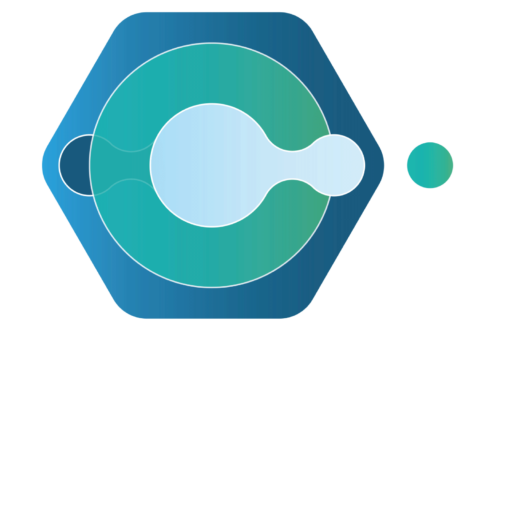Aerospace-Tech
Aerospace-Tech
Aerospace and aviation, a dynamic and cutting-edge field integrate principles of mechanical, electrical, and materials science to propel humanity into the skies and outer space. Notably, aerospace technology is often intricately connected to government entities, where collaboration drives advancements in defense, national security, and space exploration. In addition, the aerospace industry grapples with substantial costs, particularly during the testing phase of innovative products, where rigorous evaluation and experimentation are imperative. The intricate nature of aerospace technologies, coupled with the demand for precision and safety, often leads to high expenses in prototyping and testing. Moreover, the absence of aerospace technology programs in schools deprives young minds of crucial exposure to a field pivotal in our technological era. This gap not only restricts their awareness of aeronautical achievements, but it also obstructs the growth of prospective future innovators and professionals in the sector, hindering the development of a skilled workforce.
The aerospace technology sector faces several challenges, encompassing technological, economic, and environmental aspects. Some of the prominent challenges include:
Navigating these challenges requires a combination of innovation, strategic planning, international collaboration, and ongoing efforts to address environmental concerns and regulatory complexities.
- High Development Costs
- Stringent Safety Standards
- Technological Complexity
- Environmental Impact
- Global Competition
- Supply Chain Disruptions
- Regulatory Compliance
- Rapid Technological Advances
- Talent Shortages
- Risk of Project Failures
- Space Debris Management
- Global Economic Volatility
- Adapting to New Technologies
- Absence of aerospace tech programs in schools

Prop-Tech Importance:
The importance of Aerospace technology, often referred to as Aerotech, is profound and multi-faceted, influencing various aspects of modern life. Here are key points highlighting the significance of Aerospace technology:
Aerospace technology is integral to global connectivity, security, innovation, economic prosperity, and the pursuit of knowledge. Its impact extends beyond the aerospace industry, shaping various aspects of society and contributing to the advancement of humanity.
Aerospace technology plays a pivotal role in connecting people and goods across the globe. Commercial aviation facilitates efficient and rapid transportation, fostering international trade, tourism, and cultural exchange.
Aerospace technology is integral to national security, providing capabilities for surveillance, reconnaissance, and defense. Military aircraft, satellites, and missile systems contribute to safeguarding nations and maintaining geopolitical stability.
The aerospace sector is a driving force for technological innovation. Advances in materials, propulsion systems, avionics, and aerodynamics not only benefit the aerospace industry but also contribute to advancements in other fields, such as manufacturing and materials science.
Aerospace technology enables space exploration, allowing humanity to explore the cosmos. Space missions contribute to scientific discovery, technological advancements, and a deeper understanding of the universe.
The aerospace industry is a significant contributor to the global economy. It generates employment, fosters research and development, and supports a network of suppliers and service providers, contributing to economic growth and stability.
Aerospace technology plays a crucial role in humanitarian efforts and disaster response. Aircraft are instrumental in delivering emergency relief, conducting search and rescue operations, and providing medical evacuation in times of crisis.
Satellites and aerospace technology contribute to Earth observation and environmental monitoring. This includes tracking climate change, monitoring natural disasters, and gathering data for sustainable resource management.
Aerospace technology enables scientific research in various disciplines. High-altitude research aircraft, space telescopes, and satellite missions provide valuable data for scientific exploration and understanding Earth’s atmosphere and beyond.
The challenges of aerospace engineering often lead to the development of innovative technologies with applications beyond the aerospace industry. These technological spin-offs impact fields such as healthcare, communications, and materials science.
Aerospace technology enables scientific research in various disciplines. High-altitude research aircraft, space telescopes, and satellite missions provide valuable data for scientific exploration and understanding Earth’s atmosphere and beyond.
SEIYAJ TECH as a collaborative force, seamlessly cooperates with the Aerospace-tech innovators in software and hardware solutions, to localize and integrate among the innovations in the world, delivering the best solutions that cover all the challenges faced in our environment, bringing the best solution to the governments. SEIYAJ TECH supportive effort will include all the stakeholders in Aerospace technology. Hence, in the private sector will include aerospace manufacturers, aerospace suppliers and subcontractors, commercial aerospace operators, aerospace technology companies, research and development firms, institutions. In the public sector government space agencies, military aerospace organizations, regulatory authorities, national aeronautics, space research organizations. In addition to, international organizations (civil aviation and air transportation), educational and research institutions, non-governmental organizations (NGOs), and industry associations. SEIYAJ TECH is fostering partnerships to integrate a variety of cutting-edge solutions and technologies in the aerospace sector to cater for the government’s needs. Moreover, SEIYAJ TECH advocates innovation by collaborating with research and education institutions. SEIYAJ TECH leverage blockchain technology enhancing transparency, security, and efficiency in various processes to revolutionize various aspects of the industry in supply chain management, quality assurance, maintenance and repairs, data security, aircraft records and documentation, smart contracts for transactions, flight data and analytics, collaborative research and development, regulatory compliance, tokenization of assets and much more.
Aerospace technology, comprising both hardware and software components, plays a critical role in the design, operation, and management of aircraft and spacecraft. The combination of hardware and software ensures the safe and efficient operation of these vehicles, contributing significantly to advancements in aviation, space exploration, and scientific research. The continuous integration of sophisticated software systems further enhances the capabilities, safety, and efficiency of aerospace technologies.
Here’s a division of Aerospace-Tech components into two categories:
Flight Control Software:
Autopilot Systems: Software for automated control of an aircraft’s flight.
Navigation Software: Algorithms and systems for determining the aircraft’s position and route.
Avionics Software:
Software Defined Radio: Programs that enable flexible and adaptive radio communication.
Glass Cockpit Displays: Software interfaces presenting flight data to pilots.
Spacecraft Control Systems:
Guidance, Navigation, and Control (GNC) Software: Algorithms for spacecraft orientation and trajectory control.
Attitude Determination Software: Programs for calculating the spacecraft’s orientation.
Communication Software:
Satellite Communication Protocols: Software governing communication between satellites and ground stations.
Aircraft Communication Addressing and Reporting System (ACARS): Software for aircraft communication with ground-based stations.
Simulation and Training Software:
Flight Simulators: Software providing realistic training environments for pilots.
Mission Simulation: Software for simulating space missions to test spacecraft behavior in various scenarios.
Aircraft Components:
Aerostructures: Physical components of an aircraft, including the fuselage, wings, and tail.
Propulsion Systems: Engines, propellers, or turbines that provide thrust for aircraft propulsion.
Landing Gear: Wheels, struts, and related systems for takeoff, landing, and taxiing.
Avionics:
Cockpit Instruments: Physical devices for navigation, communication, and monitoring within the aircraft.
Flight Control Systems: Physical interfaces and actuators that control the aircraft’s orientation and movement.
Radar Systems: Hardware for aircraft navigation, weather detection, and air traffic control.
Spacecraft Components:
Structural Elements: Components like the spacecraft frame, solar panels, and antennas.
Propulsion Systems: Thrusters or rockets for adjusting the spacecraft’s trajectory.
Payload Instruments: Physical devices for scientific research or communication purposes.
Satellites:
Solar Arrays: Hardware for collecting and converting solar energy into electricity.
Antennas: Devices for communication between satellite and ground stations.
Onboard Computers: Physical processors and memory for satellite control and data processing.

